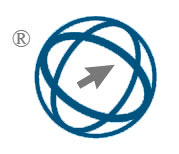Enhanced Network Security Hybrid Cloud Workflow Scheduling Using Levy-Optimized Slime Mould Algorithm
Abstract
Mainstream network security models based on PSO and other algorithms have not been optimized for hybrid cloud environments, resulting in limitations in their application. To ensure network security in hybrid cloud environments, the study first introduces the Levy distribution, uses the Levy distribution to generate random numbers and redesign the position update formula. Then, the penalty parameters of SVM and the radial basis kernel function parameters of SVM are used as individuals to improve SMA. After iteration, the optimal position is the optimal solution of the two parameters. After determining the optimal parameters, an improved slime mould algorithm optimization algorithm is designed. Finally, the algorithm is applied to the encoded hybrid cloud workflow scheduling to propose a method based on the improved slime mould algorithm. The test results showed that when the number of tasks was 1000, the proposed algorithm took 13.7 hours to run, which was better than the traditional 18.2 hours and more than 50 hours of the particle swarm algorithm (P<0.05). Except for Guess passward attack, the detection rate of the proposed algorithm exceeded 91%, while that of other algorithms was between 77% and 91%. For Guess passward attacks, the detection rate of the traditional slime mould algorithm was 8.93%, but the proposed algorithm increased to 11.54% (P<0.05). After applying this method, the task completion time in the hybrid cloud environment reduced by 61.9%, the resource utilization rate increased by 27.5%, and the incidence of network security events reduced by 87.9%. Based on the testing results, the proposed algorithm has considerable detection performance for network security issues in hybrid cloud environments. It can correctly identify the types of network attacks in network security monitoring and improves its application effectiveness in network security.
Full Text:
PDFDOI: https://doi.org/10.31449/inf.v49i18.7327

This work is licensed under a Creative Commons Attribution 3.0 License.









